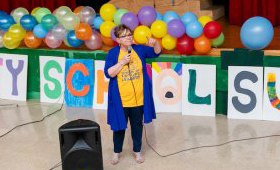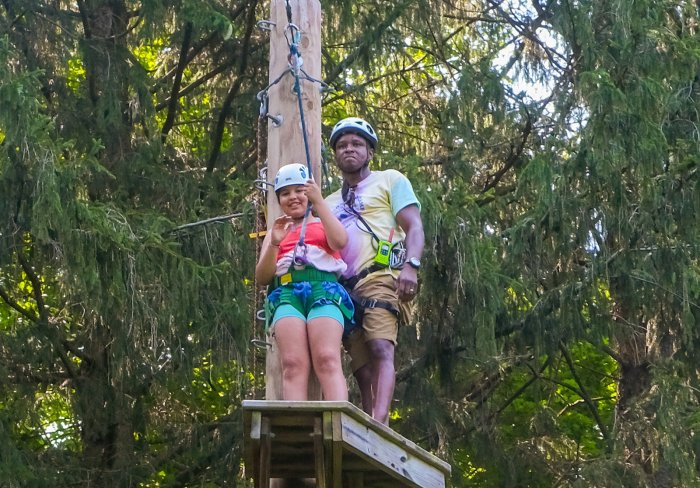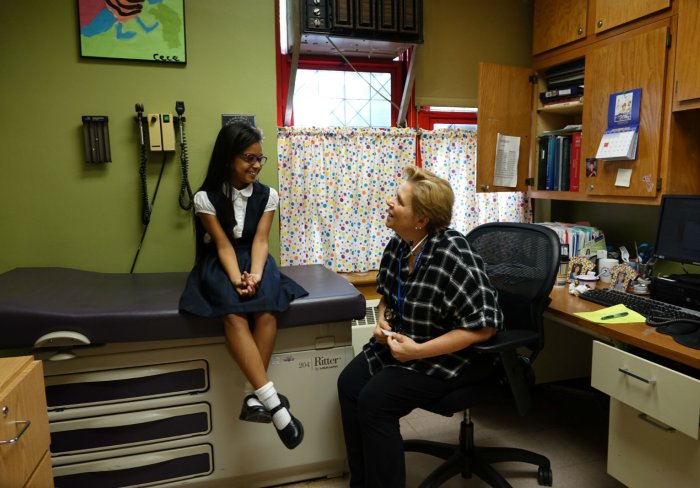Fabio Cruz Cueto has relied on Children’s Aid school-based health centers since 2015.
He attended P.S. 5, our community school in Inwood, where he received routine check-ups and dental cleanings. For his mother, Mayra Cueto Peralta, school-based health centers have been a saving grace.
Fabio began experiencing seizures when he was 3 years old. It was nerve-wracking for Mayra but the staff and nurse practitioners at her son’s school were there for her every step of the way.
“When Fabio was in the care of a neurologist, they would send medication to the school-based health center,” she said. “Whenever anything happened, the nurse practitioner always called me. I had such peace of mind knowing that his school had medical providers on staff.”
Mayra is on a first-name basis with the staff at the school-based health center. Mayra remembers how Mary Nealon, the nurse practitioner, was the conduit between Fabio’s neurologist and teachers; and how Shirley Campusano and Dilenny Hernandez, the administrative assistants, always made her feel welcome.
Now Fabio is 13 and attends City College Academy of the Arts, a middle school in the Salomé Ureña Campus, another Children’s Aid community school with a co-located school-based health center in Inwood. He has been seizure-free for three years and is thriving in school. “Thank God and the health care providers who took care of my son, today he is a healthy young man with a bright future ahead of him” Mayra said.
Mayra believes in the school-based health center model, and her personal experience has propelled her to become a community leader and advocate of the school-based health centers, participating in events aimed at educating elected officials about the importance of funding these health centers. Additionally, Mayra is a member of the Department of Education’s Community Education Council (CEC), a VIP Literacy Inc. volunteer, a children’s literacy community program, and a parent ambassador of the Department of Education’s Family and Community Wellness Collective.
“Whenever I speak to other parents, the first thing I tell them is they should sign up for the health center,” she said. “I tell them they have excellent doctors, nurses, dentists. It’s such a relief to know that your child is physically, emotionally, and psychologically safe. Every school in our community needs a health center.”
In addition to services for her son, our community school has also enriched Mayra’s life. Nayady Cruz, then parent coordinator at P.S. 5, introduced Mayra to Lidia Aguasanta, the parent coordinator at Fabio’s middle school. Through that connection, Mayra has participated in a variety of workshops that educate parents about nutrition, wellbeing, and parenting. She has also taken English language classes provided by Children’s Aid.
“Lidia and Nayadi have been a great support to me, they offer so many opportunities to the parents who visit the schools where they work. I have participated in the Summer Camp for parents that Lidia leads and I have learned so much. Last year, we did craft projects with recycled newspaper and other materials. I was so inspired that I wrote an article that was published in El Especialito and El Diario NY, both Spanish language newspapers, last September.”
Mayra’s experience has strengthened her belief that it takes a village to raise a child. Children’s Aid understands this deeply, and it’s why we became a pioneer of the community school model more than 25 years ago.
Today, we operate 20 community schools throughout New York City, and we work with each school’s leadership and staff to offer academic enrichment programs, health services, parent engagement strategies, and much more to give students the best opportunities to succeed.
Though Fabio is doing much better, he still relies on the school-based health center and the services provided by Children’s Aid. Mayra plans to continue championing these programs because she knows they benefit her village.
“I’m doing this not only for my child, but for the children who play with my child,” she said. “I know that these services that provide safety and wellbeing to the community, at the end of the day, benefit everyone. I want to know the kids that play with my kid are also doing well. It’s a domino effect.”







